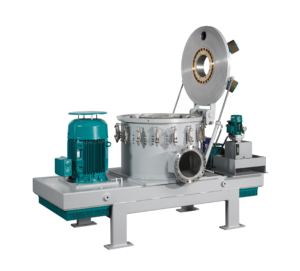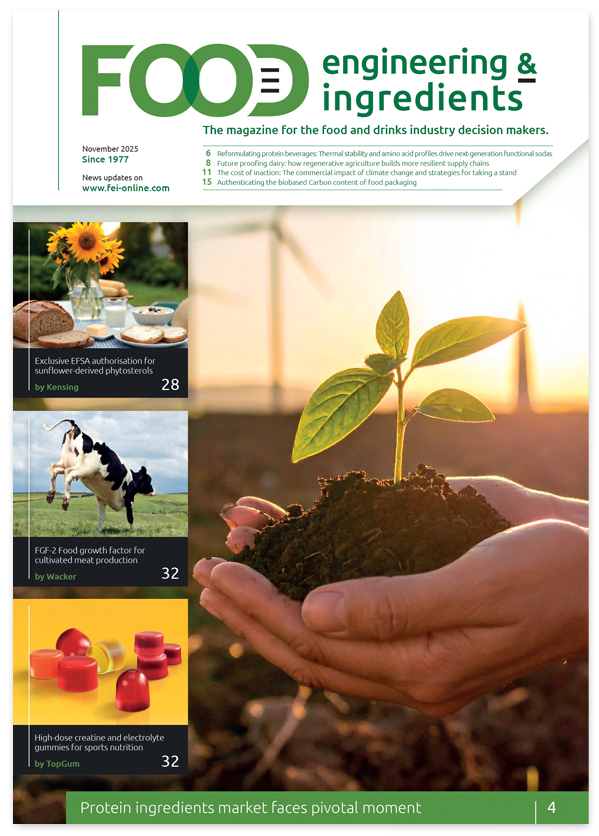Protein Shifting and Enrichment with the use of Dry Grinding and Classifying
Worldwide, the food supply chain is being faced with change. On the one hand, the increasing growth of the worldwide population creates an increasing need for foodstuffs, including a supply of proteins. This increasing need cannot be covered by animal proteins/products alone, due to the land requirements of livestock. On the other hand, the growing demand by consumers for sustainable production methods must be taken into account. The criticism of the sustainability of animal products in particular is expanding: The land usage and water consumption as well as greenhouse gas emissions of these products, in comparison to those of cultivated crops, are many times higher. Alternative sources of protein are being sought, and they play an important role for meeting future population needs. In addition to plant products, mushrooms, algae or insects, can be placed in this category.
Currently, soy is the most common of the crops used as a meat substitute based on plant material. They are processed into isolates with high protein contents of > 80%. The typical method for obtaining these is wet extraction. The use of large amounts of water, chemicals and energy for drying, makes this method a laborious, complex and resource consuming process. An alternative process is drying fractionation – a process that has been used to process flour for quite some time. NETZSCH has successfully been able to carry over the experience obtained from this process to the processing requirements of crops.
The goal of the application is to achieve a protein rich fraction in which the portion of protein is considerably higher than that of the initial material, by means of grinding and subsequent separation.
The beans or grains of a chosen crop are cleaned and dehulled, and afterward passed on for dry grinding, the objective of which is to break up the cells and to separate the starch granules from the proteins and fibrous cell parts. The most energy-efficient method for achieving this, is impact grinding using the NETZSCH classifier mill type CSM.
The integrated classifier of this mill type assures that the coarse cell fragments remain in the grinding chamber for the duration necessary to destroy them, and to separate the starch and protein particles from one another. Only in this manner, can a high yield be achieved in the subsequent separation step, with an optimum amount of energy expenditure.
It is decisive for the separation step, that during the grinding process, the size difference between the protein and the starch granules remain as large as possible. Depending on the type of crop, the particle size of the protein is < 3 µm, whereas the size of the starch granules range from 3 µm to 40 µm. The force applied to the starch in the NETZSCH Classifier Mill, is far more gentle than that of a pin mill. This maintains the size difference between the protein and starch particles to the greatest possible extent, through which highest degrees of efficiency during separation are possible. Separation is achieved using the NETZSCH High-Efficiency Fine Classifier CFS/HD-S. This classifier uses a stream of air to disperse the solid particles. Only through effective dispersion is it possible to optimally separate all of the particles and classify them according to size and/or weight. For this purpose, the ground product is passed into a ring gap, charged with air. The ring gap accelerates both particles into a circulatory motion, and the additional centrifugal forces separate them from one another. The particles are separated considerably more effectively, and thereby higher protein values and yields achieved, as compared to other design forms of classifiers. Once the processing parameters have been optimized to the product characteristics, on average, protein values of over 55% can be obtained, depending on the product. Therefore, dry fractionation offers possibilities for cost effective, sustainable processing of premium quality products that have a high protein content. In addition, this type of process offers the invaluable advantage of flexible processing of diverse crops, simply by varying the processing parameters. About NETZSCH Grinding & Dispersing
The Grinding & Dispersing Business Unit, one of three business units of the global NETZSCH Group, offers a comprehensive program for the many challenges in mechanical process engineering. Here the Business Unit is primarily involved in the areas of wet and dry grinding, mixing, dispersing, de-aeration and classifying. The laboratory- and production-scale machines, as well as complete production lines, are used in almost all areas of industry, such as the forward-looking nanotechnology, the production of ink, minerals or foods.
The bundling of processing know-how, our extensive machine program, solutions for customer-specific problems and our global presence are unique and hence the strength of the business unit.
Our performance standards are high. We promise our customers Proven Excellence – exceptional performance in everything we do, proven time and again since 1873.
For more information please visit www.netzsch.com/gd




